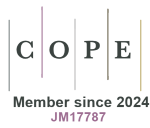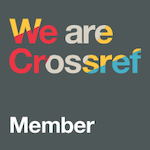First experiences of using the Dexcom ONE CGM system: results from a national survey on the perception of early adopters
DOI:
https://doi.org/10.33393/ao.2024.3115Keywords:
Continuous glucose monitoring (CGM), Diabetes mellitus, Early adopters, UsabilityAbstract
Introduction: The availability of increasingly accurate and high-performing Continuous Glucose Monitoring (CGM) systems today allows for the adoption of selection criteria based not only on clinical profiles but also on the preferences of people with diabetes.
Methods: The “Dexcom ONE Experience” study aimed to investigate the initial user experiences with the Dexcom ONE CGM system in the real lives of people with diabetes undergoing insulin therapy, specifically early adopters (i.e., patients who first in Italy adopted Dexcom ONE CGM who have used the device for at least 30 days). Empirical evidence was collected, focusing primarily on usability, satisfaction, and impact on quality of life (QoL) of the system, through an online survey. All survey participants were insulin-treated patients, as indicated by CGM device recommendations.
Results: Analysis was conducted on 300 completed surveys. 93% of respondents consider the device useful for diabetes management; 91% find it helps in more effectively managing therapy, while 88% report an improvement in health. 86% find it easy to learn how to use, and 93% plan to continue using it in the coming months. 74% believe the system to be highly reliable. The most recognized and utilized functions are data visibility on smartphones/receivers and glycaemic trend visibility. 70% of respondents express being “very or extremely satisfied” with the Dexcom ONE device experience (scoring 4/5), and 90% note a “positive or extremely positive” impact on their QoL from using the device.
Conclusions: In conclusion, usability and satisfaction levels have proven to be high among early adopters of the Dexcom ONE CGM system.
References
- The DCCT Research Group. Diabetes Control and Complications Trial (DCCT): results of feasibility study. Diabetes Care. 1987;10(1):1-19. CrossRef PubMed. https://doi.org/10.2337/diacare.10.1.1 PMID:2882967 DOI: https://doi.org/10.2337/diacare.10.1.1
- Zaccardi F, Pitocco D, Ghirlanda G. Glycemic risk factors of diabetic vascular complications: the role of glycemic variability. Diabetes Metab Res Rev. 2009;25(3):199-207. CrossRef PubMed. https://doi.org/10.1002/dmrr.938 PMID:19172575 DOI: https://doi.org/10.1002/dmrr.938
- Beck RW, Bergenstal RM, Riddlesworth TD, et al. Validation of Time in Range as an Outcome Measure for Diabetes Clinical Trials. Diabetes Care. 2019;42(3):400-405. https://doi.org/10.2337/dc18-1444 PMID:30352896 DOI: https://doi.org/10.2337/dc18-1444
- Battelino T, Danne T, Bergenstal RM, et al. Clinical targets for continuous glucose monitoring data interpretation: recommendations from the international consensus on time in range. Diabetes Care. 2019;42(8):1593-1603. CrossRef PubMed. https://doi.org/10.2337/dci19-0028 PMID:31177185 DOI: https://doi.org/10.2337/dci19-0028
- Tamborlane WV, Beck RW, Bode BW, et al; Juvenile Diabetes Research Foundation Continuous Glucose Monitoring Study Group. Continuous glucose monitoring and intensive treatment of type 1 diabetes. N Engl J Med. 2008;359(14):1464-1476. CrossRef PubMed. https://doi.org/10.1056/NEJMoa0805017 PMID:18779236 DOI: https://doi.org/10.1056/NEJMoa0805017
- Pickup JC, Freeman SC, Sutton AJ. Glycaemic control in type 1 diabetes during real time continuous glucose monitoring compared with self monitoring of blood glucose: meta-analysis of randomised controlled trials using individual patient data. BMJ. 2011;343(jul07 1):d3805. CrossRef PubMed. https://doi.org/10.1136/bmj.d3805 PMID:21737469 DOI: https://doi.org/10.1136/bmj.d3805
- Ministero della Salute. Linee guida sul diabete. Online https://www.salute.gov.it/portale/diabete/dettaglioContenutiDiabete.jsp?lingua=italiano&id=6118&area=diabete&menu=vuoto&tab=2 (Accessed April 2024)
- Linee guida della Società Italiana di Diabetologia (SID) e dell’Associazione dei Medici Diabetologi (AMD). La terapia del diabete mellito di tipo 2. Versione aggiornata a Dicembre 2022 Online https://www.iss.it/documents/20126/8331678/LG_379_diabete_tipo2_ed2022 (Accessed April 2024)
- Maiorino MI, Buzzetti R, Irace C, et al; LIVE CGM working group. An updated algorithm for an effective choice of continuous glucose monitoring for people with insulin-treated diabetes. Endocrine. 2023;82(2):215-225. CrossRef PubMed. https://doi.org/10.1007/s12020-023-03473-w PMID:37676398 DOI: https://doi.org/10.1007/s12020-023-03473-w
- Manzoni M, Minotti D, Bartesaghi A, Boaretto A. Indicatori di usabilità dei sistemi di monitoraggio in continuo del glucosio: il punto di vista delle persone con diabete. AboutMedicine Spotlight. Anno XI, N.8, novembre 2023. Health Publishing & Services S.r.l
- ISO 15197:2013. In vitro diagnostic test systems — Requirements for blood-glucose monitoring systems for self-testing in managing diabetes mellitus. Online https://www.iso.org/standard/54976.html (Accessed April 2024)
- Personalizzazione della scelta dei sistemi CGM. Esperienze di utilizzo con il dispositivo Dexcom ONE. AboutMedicine Spotlight. Anno XII, N.4, febbraio 2024. Health Publishing & Services S.r.l
- Ajjan RA, Cummings MH, Jennings P, Leelarathna L, Rayman G, Wilmot EG. Accuracy of flash glucose monitoring and continuous glucose monitoring technologies: implications for clinical practice. Diab Vasc Dis Res. 2018;15(3):175-184. CrossRef PubMed. https://doi.org/10.1177/1479164118756240 PMID:29446646 DOI: https://doi.org/10.1177/1479164118756240
- Il Diabete Online, Organo ufficiale della Società Italiana di Diabetologia, Allegato, Vol. 35 n. 2 luglio 2023. Online https://www.ildiabeteonline.it/supplemento-il-diabete-volume-35-n-2-2023/ (Accessed April, 2024)
- Davis FD. Perceived Usefulness, Perceived Ease of Use, and User Acceptance of Information Technology. Manage Inf Syst Q. 1989;13(3):319. https://doi.org/10.2307/249008 DOI: https://doi.org/10.2307/249008
- Davis FD, Bagozzi RP, Warshaw PR. User Acceptance of Computer Technology: A Comparison of Two Theoretical Models. Manage Sci. 1989;35(8):982-1003. https://doi.org/10.1287/mnsc.35.8.982 DOI: https://doi.org/10.1287/mnsc.35.8.982
- AlQudah AA, Al-Emran M, Shaalan K. Technology Acceptance in Healthcare: A Systematic Review. Appl Sci (Basel). 2021;11(22):10537. https://doi.org/10.3390/app112210537 DOI: https://doi.org/10.3390/app112210537
- Rahimi B, Nadri H, Lotfnezhad Afshar H, Timpka T. A Systematic Review of the Technology Acceptance Model in Health Informatics. Appl Clin Inform. 2018;9(3):604-634. https://doi.org/10.1055/s-0038-1668091 PMID:30112741 DOI: https://doi.org/10.1055/s-0038-1668091
- Carrera A, Zoccarato F, Mazzeo M, et al. What drives patients’ acceptance of Digital Therapeutics? Establishing a new framework to measure the interplay between rational and institutional factors. BMC Health Serv Res. 2023;23(1):145. https://doi.org/10.1186/s12913-023-09090-7 PMID:36765410 DOI: https://doi.org/10.1186/s12913-023-09090-7
- Brooke J. SUS: a “quick and dirty” usability scale. In: Jordan PW, Thomas B, Weerdmeester BA, McClelland AL, eds. Usability Evaluation in Industry. Taylor and Francis; 1996.









